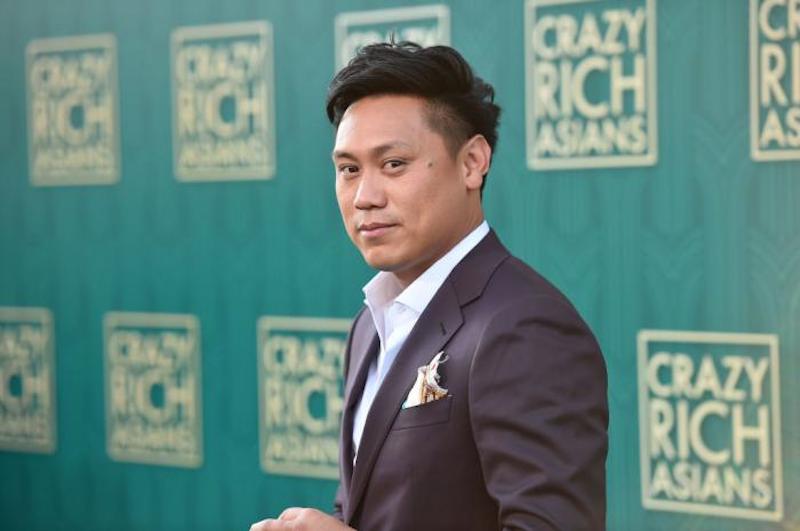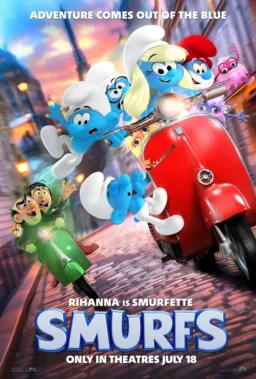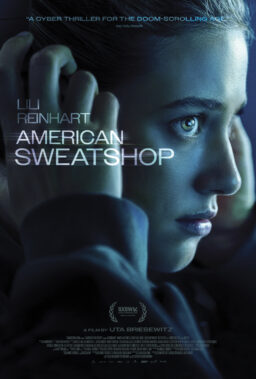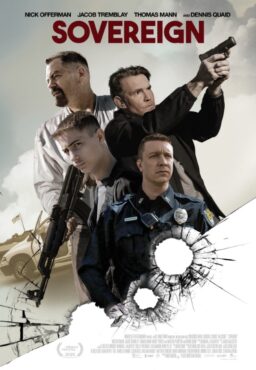Thumbnails is a roundup of brief excerpts to introduce you to articles from other websites that we found interesting and exciting. We provide links to the original sources for you to read in their entirety.This special edition of Thumbnails celebrates the success of Jon M. Chu‘s “Crazy Rich Asians,” as well as explores the current state of representation in Hollywood. Such an exciting time for much-needed change in the industry, and the box office numbers prove there is a massive audience for films like this. Roger would’ve been thrilled.—Chaz Ebert
1.
“How a Roger Ebert Rant Inspired ‘Crazy Rich Asians’ Director Jon M. Chu“: As detailed by Pajiba‘s Kristy Puchko.
“Roger Ebert is an inspiration to countless film critics and was a champion for daring filmmakers around the world. One moment where he literally stood up for an up-and-coming Asian-American director has proved pivotal in the life of another, ‘Crazy Rich Asians’’ helmer Jon M. Chu. Next Shark unearthed a video from the 2002 Sundance Film Festival, where Taiwanese-American director Justin Lin was confronted by an outraged accuser at the Q&A following ‘Better Luck Tomorrow.’ The drama that starred Sung Kang and John Cho features bored Asian-American teens committing petty crimes, spurring one audience member to ask, ‘Why, with the talent up there and yourself, make a film so empty and amoral for Asian-Americans and for Americans?’ Essentially, when Asian-Americans are so underrepresented in American cinema, why make a movie that shows any Asian-American in a negative light? It’s a reactionary question, and one that’s arisen in many forms as marginalized groups gain greater spotlight in mainstream media. But what this concern overlooks is that representation shouldn’t mean PR. It means people regardless of race/creed/gender/size/sexual orientation/ableness playing characters who are complex and live outside of suffocating stereotypes. Ebert understood this. And as Lin was at a loss for words, Ebert took the lead, standing up from his seat in the audience and declared: ‘What I find very offensive and condescending about your statement is nobody would say to a bunch of white filmmakers, ‘How could you do this to your people?’…Asian-American characters have the right to be whoever the hell they want to be.’”
2.

“How ‘Crazy Rich Asians’ Producers Steered a Box-Office Smash and Spawned a Sequel“: Indiewire‘s Anne Thompson has the scoop.
“‘Fresh Off the Boat’ star Constance Wu was so eager to land the lead of Rachel that she begged the producers to wait for her to be available. ‘She’s the prototype of the all-American girl next door,’ said Jacobson. ‘Likable, down to earth. We told Warners that’s who we want, but hadn’t gotten married. They were on board. We wanted to give our partner a voice in such a big casting decision, and we agreed to wait for her.’ Rachel is an economics professor thrown into a classic fish out of water milieu. ‘She’s misunderstood, in waters she’s not familiar with,’ said Jacobson. ‘She’s a woman who, under any other circumstances, is a confident, capable woman who could thrive anywhere. We wanted a cool, confident New Yorker who has not spent a whole lot of time thinking about what clothes to put on. Every character is defined by wardrobe, every character had to have a specific identity. You wanted her to feel over her head. She assumes she can do this anywhere [and] she doesn’t realize how intimidating Singapore will be. Rachel doesn’t need a man to fulfill her. She’s in love with Nick, and comes to a place of self realization that she’s the catch, even though he’s Prince Charming!’ Nick is played by suave newcomer Henry Golding, a local Singapore television host turned instant movie star. ‘Nick has to pass for Singapore native,’ said Jacobson, ‘he’s not American. [Americans] Awkwafina or Ken, they’re part of an eclectic community there, people who travel.’ Romantic comedies are always about barriers to romance. ‘Often the things that get in the way of romance are a misunderstanding or a mishap,’ said Jacobson. ‘Here, the dramatic stakes in the way are cultural conflict. And it’s also a romantic movie where the women are the most dynamic characters.’”
3.
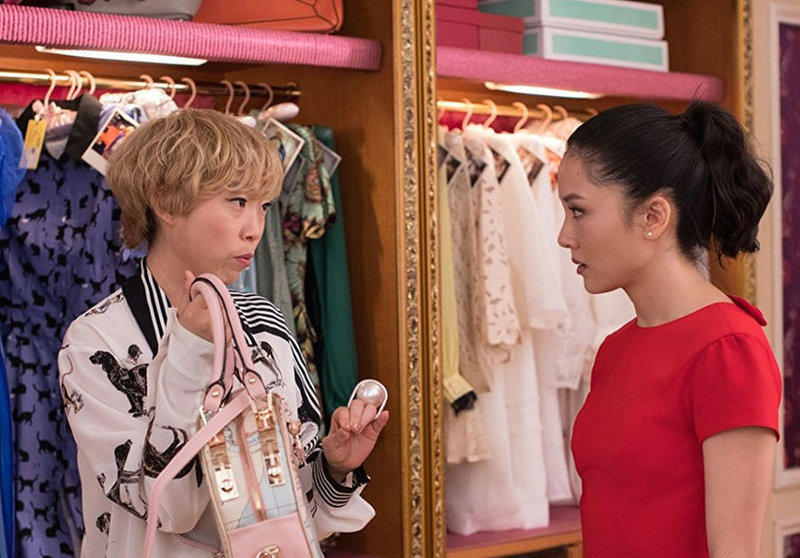
“The box-office success of ‘Crazy Rich Asians’ was a long time coming, and shows the power of Asian American consumers“: According to Carrie Wittmer of Business Insider.
“Carpenter and the Diversity and Inclusion team at Nielsen researched Asian American consumers and shared their insights with clients that include content creators, manufacturers, brands, and retailers. ‘Big, big, big, brands in America,’ Carpenter said. According to Carpenter, Nielsen’s research showed Asian American Pacific Islanders (AAPI’s) buy movie tickets 75 percent more than non-Hispanic whites. They also watch and download movies online 83 percent more than non-Hispanic whites. According to Warner Bros., Asians comprised almost 40% of ‘Crazy Rich Asians’’ audiences opening week. ‘The influence and power that we [Asians Americans] have as a community is so powerful that any brand today looking to grow their business, or even maintain their current business, really needs us,’ Carpenter said. ‘When you look at the top rated shows, a lot of them are those that have multicultural casts,’ Carpenter continued. ‘You have ‘Big Bang Theory,’ ‘This is Us,’ ‘The Good Doctor.’ Americans, particularly your Gen Zs and your Millennials, are used to seeing diversity. They live in a diverse community and culture, have a diverse friend group and family.’”
4.

“Hollywood Loves Talking Diversity, But New Study Finds Women, Minorities and LGBTQ Are Underrepresented On Screen“: Kate Erbland of Indiewire reports on the latest sobering study from Professor Stacy L. Smith and the Annenberg Inclusion Initiative.
“The latest study from Professor Stacy L. Smith and the Annenberg Inclusion Initiative at USC’s Annenberg School for Communication and Journalism, finds “that on-screen progress toward inclusion remains to be seen in popular movies with regard to females, underrepresented racial/ethnic groups, the LGBT community, and individuals with disabilities.’ The latest study from Smith and her Annenberg Inclusion Initiative examined over 48,000 characters from the 1,100 ‘top films’ from 2007 to 2017 (by Smith’s metrics, the top 100 movies at the domestic box office for each calendar year, the majority of which are studio movies). The study notes that ‘female speaking characters on screen filled just 30.6% of all roles across the 11-year time frame while less than 1% of all characters were from the LGBT community.’ ‘Those expecting a banner year for inclusion will be disappointed,’ said Smith, Founding Director of the Annenberg Inclusion Initiative, in an official statement. ‘Hollywood has yet to move from talking about inclusion to meaningfully increasing on-screen representation for women, people of color, the LGBT community, or individuals with disabilities.’ Smith and her initiative also used what they call an ‘invisibility analysis’ to see which films are ‘missing’ female characters from various groups, including making note of films that did not include African-American or Latina women, or transgender women. As Deadline notes, ‘Across 400 films from 2014 to 2017, only one transgender character appeared on screen.’”
5.

“After ‘Black Panther’ and ‘Wonder Woman,’ it’s time for the myth of the fanboy to fade“: Essential commentary from Variety‘s Owen Gleiberman.
“Back in the ’90s, when filmmakers like Spike Lee and John Singleton were making inroads into the mainstream movie industry, there was a line of argument that film executives used to trot out whenever they were confronted with charges of racism. They would defend their turf by saying, ‘The only color Hollywood cares about is green.’ That’s a clever and insidious notion, since it slyly offers up one of the worst realities of the entertainment industry (its obsession with breaking the bank) as a cover for an even worse reality. It’s saying, in essence, ‘How could I be racist when I’m this greedy?’ That same logic could be applied to the issue of gender: ‘How could I be discriminating against female moviegoers when I’m this greedy?’ Yet there are, in truth, many priorities in Hollywood apart from greed. People have a bias toward making movies that reflect…themselves. Ever since the ’80s, when the film industry morphed into a franchise-driven business of sensation aimed, primarily and officially, at teenage boys, the boys’ club of Hollywood has defended its tastes — and its hiring practices — with an axiomatic logic that became accepted and embraced in the society at large. The new New Hollywood, reborn as a pop fundamentalist dream factory after ‘Jaws’ and ‘Stars Wars,’ was built on an all-fantasy-all-the-time aesthetic that justified itself with every report of the weekend box-office grosses. The new Hollywood said, in essence, ‘Don’t talk to us about racism and sexism. This is what sells.’ Franchise films, even though they weren’t yet called that, were treated as a religion: If you build this glittering big-budget special-effects sequel, they will come. And the key word in that formulation was ‘they.’ They will come. Who were they? They, of course, were the fanboys.”
Image of the Day

Our Far Flunger Jana Monji reports from the red carpet premiere of “Crazy Rich Asians” in Los Angeles.
Video of the Day
Roger Ebert’s impassioned defense of Justin Lin’s “Better Luck Tomorrow” at Sundance, a moment that inspired “Crazy Rich Asians” director Jon M. Chu.

